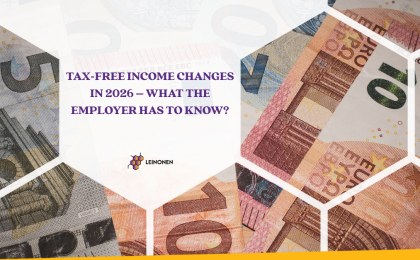The restriction mainly means that when purchasing or using an automobile for business purposes through a contract of use (including renting or leasing), input value added tax can be deducted to a level of no more than 50%. The same restriction applies when purchasing goods or services for the automobile (fuel, repairs, maintenance etc.).
According to the Value Added Tax Act, an automobile is an M1-category vehicle with a tare weight of no more than 3500 kg and which in addition to the driver’s seat has no more than eight seats.
Some exemptions remain, in which case 100% can be deducted from the input value added tax:
- the automobile is purchased to sell on condition that the taxable person is active in automobile sales and the taxable person does not use the purchased automobiles for any other purpose;
- the automobile is purchased for giving into use based on a contract of use on condition that the taxable person is active in giving automobiles into use and the taxable person does not use the automobiles purchased for giving into use for any other purpose;
- the automobile is mainly used as part of a taxi service on condition that the taxable person has a taxi licence and licence card;
- the automobile is mainly used for driving lessons on condition that the taxable person has a driver training licence or the taxable person provides a service as a driving instructor to a person who has a driver training licence; or
- used solely for business purposes – the automobile is solely used for business purposes.
Five exemptions and two-year obligation of use
Automobile input value added tax can only be deducted 100% if the automobile is used according to the conditions set out in the five exemptions over two years. If the purpose of the automobile changes during the two-year period (which is not considered in the case of automobiles purchased to sell) in such a way that it no longer complies with the five exemptions, the taxable parson must reimburse to the state 50% of the deducted input value added tax. Under such circumstances interest is added to the input value added tax to be reimbursed, which is calculated from the deduction of the input value added tax until reimbursement to the state budget.
Also, the term ‘automobile self-supply’ will no longer be used in the Value Added Tax Act.




